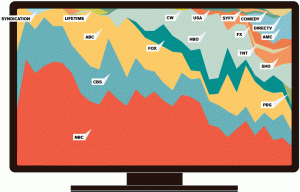A few months ago, around the time of our fifth birthday, we got an email through the contact form. (We are as surprised as you, but occasionally people do send us email.)

(Their thesis has to do with the availability of multiple channels of distribution coupled with the availability of so-called Big Data, and you’ll have to read the whole package of articles to see what you think about it. Around here, it’s well known that I have my own ideas about what’s happened to TV in the last decade, and think that larger-scale economic forces have something to do with the shift. Whatever. As the Romans might have said if they were straining hard for an erudite joke at five past midnight, De tellybus non est disputandum. But I digress.)
I’ve been reading Wired since volume 2, so to say that I was as thrilled as an overthinker can be is maybe a bit of an understatement. The whole team was thrilled, in fact, and we immediately put our heads together to pitch ideas. It was an interesting experience—we’ve never actually written anything for OTI on assignment. That’s not how this site works: the permanent writers pretty much follow their bliss, and we trust that good things will happen. As typically happens when we brainstorm, we went way overboard.
Given the thesis that TV is higher-quality these days than at any point in the past, we thought it stood to reason that it would be smarter. Our first idea was to download massive quantities of TV transcripts (they’re available online for purposes of closed-captioning), for the top 5 most popular (by ratings) and most prestigious (by Emmy awards) TV shows in five year intervals for the last thirty years. (We’d done a project involving transcripts before.) I actually wrote a small computer program (OK, it was two sed commands in a bash script) to strip out irrelevant elements form the transcripts and prepare them for analysis, and we learned all about the Flesch-Kincaid index. The idea was to demonstrate that TV is more linguistically complex than it used to be.

Looooong story short: It isn’t. Thirty years ago most TV scripts required about a 2nd to 3rd grade education to comprehend. Today, they require… about a 2nd to 3rd grade education to comprehend. We were a little dispirited, and not just because we’d already put in more than a few late nights.
(I’m thinking we could return to this idea. Analysis of the length or complexity of raw words and sentences can’t account for higher-order conceptual complexity in the plotting of tv shows—the sort of thing Steven Johnson describes in Everything Bad is Good for You
In any case, we were looking for a line that went up, and our line was flat. (I know, I know; a lot of blogs have that problem, it’s nothing to be ashamed of.) So we tossed what we had and started over. See also: The File Drawer Effect.
As we were brainstorming new ideas, we realized that we were coming up against a fundamental problem: We were making a lot of assertions based on received ideas about how TV is higher quality and more diverse than it had been in previous years; were we even sure of that premise? Before we started making outlandish claims, didn’t we need to quantify that?
We ended up submitting to Wired data that are the basis of this chart:
The graph tracks the percentage of Emmy nominations awarded to a television network in a given year. it tells a lot of stories: The fall of NBC, the rise of HBO, and the subsequent fragmentation of cable. Last year, the broadcast networks were out-nominated by cable, which was unthinkable back in the mid-80s. We did some work related to ratings—and wrote a much longer article— that didn’t make it into the final product, but here’s a fun fact: The top rated show of the 2011–2012 TV season wouldn’t have made it into the top thirty back in 1981–1982.
So anyway. This whole post is to say: We did this, we think it’s really neat, and we’re finally glad that after months of keeping our mouths shut, we can tell you about it. Let us know what you think!
More Competition = Better TV | WIRED
A postscript: One of the unexpected gems we found during the research is Brooks and Marsh’s The Complete Directory to Prime Time Network and Cable TV Shows, 1946-Present


